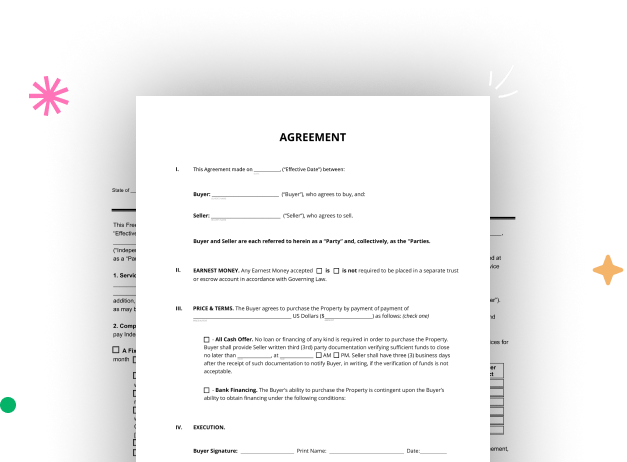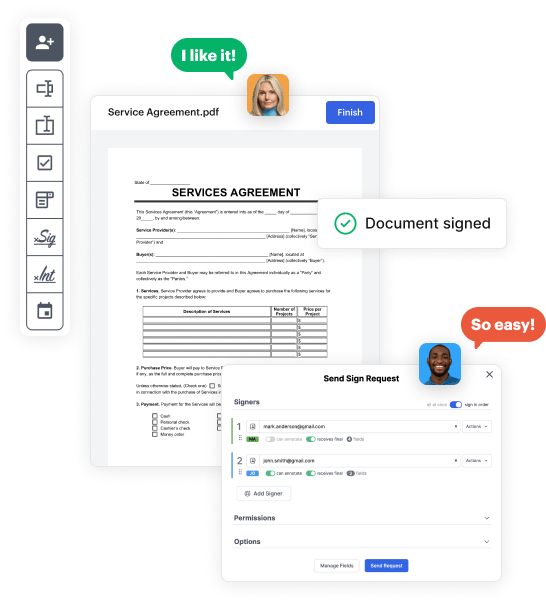

First, sign in to your DocHub account. If you don't have one, you can simply sign up for free.
Once logged in, navigate to your dashboard. This is your primary hub for all document-based tasks.
In your dashboard, hit New Document in the upper left corner. Pick Create Blank Document to craft the Indiana Real Estate Legal Form from the ground up.
Add various items like text boxes, photos, signature fields, and other options to your template and assign these fields to particular individuals as necessary.
Refine your document by inserting walkthroughs or any other vital details leveraging the text feature.
Attentively go over your created Indiana Real Estate Legal Form for any typos or essential adjustments. Take advantage of DocHub's editing tools to enhance your form.
After finalizing, save your copy. You may opt to keep it within DocHub, export it to various storage options, or forward it via a link or email.